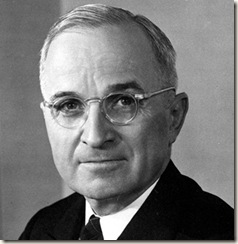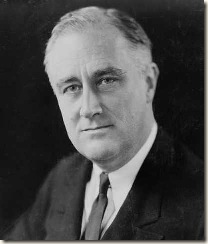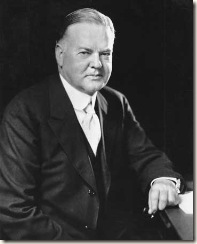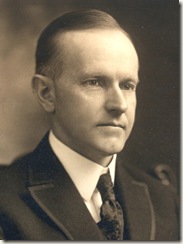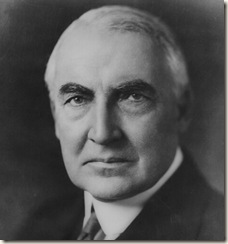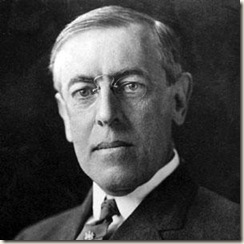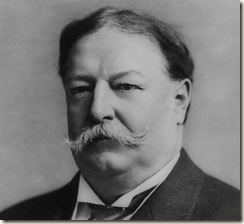Of most of the presidents, Truman has seen some of the greatest increase in his popularity after leaving the White House. When he left office in 1952 his popularity stood at 22%. By comparison, Nixon had a 24% approval rating in 1974 when he resigned. Since Truman left, his favorability rating has increased, as historians and others have revisited his legacy. In recent years he is consistently in the top ten most important presidents, probably because he took on some very controversial topics with determination in spite of opposition.
Truman was certainly a “common man”. Other presidents were supportive of the rights and needs of the average American, but Harry Truman was one of them. Prior to entering politics, Harry worked as a farmer, a clerk, a timekeeper for the Sante Fe railroad, served in the Army during WWI and owned a small business. Truman had wanted to enter West Point after graduating high school, but his poor eye sight kept him out. When he went to join the Missouri National Guard, he reportedly memorized the eye chart.
When the U.S. entered WWI in 1917 Truman’s National Guard unit was activated and sent to France. Commissioned as an officer in a field artillery unit, Truman was ultimately promoted to Major. The unit that he commanded saw action in several battles and provided support for George S. Patton. After the war Truman returned to Missouri and married Elizabeth “Bess” Virginia.
After the war, Truman became part owner in a haberdashery. I always thought a haberdashery was where one would but a hat. Turns out that it’s a store where you buy sewing items, not hats. The business was successful, but ran into hard times and went bankrupt during the recession of 1921. Probably should have sold hats.
During the war Truman had met James Pendergast, the nephew of Tom Pendergast. Tom Pendergast was the “boss” of the Kansas City Democratic Party. With the support of Pendergast, Truman entered politics and won several elections as a judge and appointments to various commissions. In 1934 Truman was “selected” by Pendergast to run for U.S. Senate (after three other people turned him down). Truman won the Democratic nomination and went on to beat the Republican incumbent by 20%.
There were allegations of corruption within the Pendergast organization. During Truman’s first Senate term a federal investigation was launched into alleged illegal activities by the Pendergast machine. Eventually Tom Pendergast was sent to prison for tax evasion. Truman was not implicated in any of the criminal activities and was not injured politically.
While still on his first Senate term, Truman co-wrote the Truman-Austin bill that created the Civil Aeronautics Board, a precursor to the Federal Aviation Administration (FAA). He spoke out against corporate greed and the dangers of the influence of money in politics. During this first term he was largely ignored by the FDR administration and had trouble even getting the White House secretary to return his calls.
He came to national attention when in his second term in the Senate he demanded an inquiry into allegations of fraud and waste within the defense industry. Named to head a Senate investigation what became known as the “Truman Committee” uncovered wide spread fraud and waste that cost the taxpayers $400,000 in just three years. Ultimately the committee saved the country an estimated $15 billion and Truman was being noticed.
In 1944 as FDR was preparing for an unprecedented fourth term, Truman was selected as his running mate (FDR had three different VP’s). Truman had one of the shortest VP careers in history. He was sworn in as VP on January 20th 1944 and then President on April 12th because of FDR’s death. Only Tyler had a shorter term as VP. Truman had been an active VP, but he spent little time with FDR. Immediately after the inauguration FDR left for a summit in Yalta with Churchill and Stalin. Crucially, when FDR returned from this conference he did not share any information with Truman. All Truman knew was what he read in the newspaper. In late March FDR left for his vacation home in Warm Springs, Georgia, where he died two weeks later.
One of the crucial decisions that Truman made in his first term was the decision to drop the atomic bombs on Japan. Prior to becoming president, Truman had never heard of the Manhattan Project or the bomb. He hinted about the bomb at the Potsdam Conference to Stalin, but Stalin knew about bomb well before Truman through espionage. With the war winding down (Germany surrendered on May 8th and Japan surrendered on Aug 14th, 1945) Truman was faced with challenges on multiple fronts: the start of the Cold War, rising inflation, labor strikes, recognition of Israel, shortages of housing and other items, and how to deal with the defeated Axis nations.
With the end of the war the Soviets began to gain control of many of the countries in Eastern Europe, including Poland, the invasion of which by the Germans started the war. Truman was uncertain what agreements had been made in Yalta and found it difficult to counter Stalin. At one point the Soviets cut off access to Berlin for the Allies. Truman responded with the Berlin Airlift (unofficially called Operation Vitals) which lasted for almost a year to get crucial supplies in to the people of Berlin. The Soviets finally blinked and reopened access.
One of the biggest policy successes of any modern president was the Marshall Plan. Truman worked with his Secretary of State to create a plan to help Europe recover from the devastation of war. Over the course of four years, the US spent more than $12.5 billion helping to promote quick recovery.
In the spring of 1946 a national rail road strike started, bringing a halt to almost all cargo and passenger rail traffic. Truman threatened to take over the railroads and draft any strikers into the military. Before he could implement the policy Truman received word that the strike had ended largely on terms that he sought. This was one of the few domestic successes that Truman could claim in his first term. Most of his domestic efforts were thwarted by congress. The midterm elections were a disaster for Truman when the Republicans gained control of both houses for the first time since 1930. Congress passed the Taft-Hartley act which was aimed at reducing the power of unions. Even though Truman vetoed the bill, Congress had the votes to override his veto.
One of Truman’s furthest reaching policies didn’t need congressional approval. Using an Executive Order, Truman ended segregation in the military. When he started calling for an end to the “Jim Crow” segregation laws in the south, he lost support within his own party. In fact, when this was written into the 1948 Democratic Party platform, South Carolina Governor Strom Thurmond formed a third party called the States’ Rights Party (or Dixiecrats). At this stage Truman’s popularity was at an all time low.
In what has been seen as master political play, Truman called Congress into a special session to give them a chance to carry out the party pledges. When Congress proved unable to pass anything, Truman went on the campaign trail railing against a “do-nothing” Republican Congress. Truman was able to energize rural and minority voters and was elected to his own term in office. Famously, the Chicago Tribune acted too quickly and ran a front page story declaring “DEWEY DEFEATS TRUMAN”.
After WWII, Korea was divided into two countries. In 1950 the North Korean leader, in an attempt to unite the country, invaded South Korea. The US supported South Korea and immediately sent supplies. Truman then supported a UN resolution for military sanctions against North Korea. US forces joined militaries from 15 other nations to defend South Korea under the umbrella of the UN. General Douglas MacArthur was given command of the overall operation. The whole UN sanctioned action was considered a police action designed to protect South Korea. When MacArthur was successful in pushing the North Koreans almost to the Chinese border, Chinese forces (after several warnings) pushed back the UN forces. MacArthur requested permission to extend the war into China. Truman returned to the UN mission of a police action and denied the request. After MacArthur publically attacked the policy, Truman fired him in April 1951. MacArthur was very popular in the US and decision to fire him has been one of the most unpopular political decisions made by a president.
By 1952 Truman was so unpopular that he decided not to seek another term. However, in more recent years his reputation has increased under observation with the benefit of passing time. This resurgence is due largely to his ability and determination to make tough decisions and not politically popular decisions. Examples include:
- The firing of MacArthur and the protecting the civilian control of the military
- The ending of segregation in the military
- Support for the creation of several post WWII entities: the UN, NATO and the State Israel.
- The Berlin Airlift to prevent the USSR from bullying the western powers out of Berlin
- Support and implementation of the Marshall Plan
Fun Facts:
- The 22nd amendment limited the president to two terms. While this was approved during Truman’s term in office, he was grandfathered and able to run in 1952 if he had chosen to. The 22nd amendment actually states that if a VP serves more than 2 years of his predecessors term he/she can only serve one of their own
- Truman joined the KKK in Missouri to gain their support for a judge’s seat. He then asked to have his membership cancelled and never attended a meeting
- Notified of FDR’s death in a meeting with Eleanor Roosevelt, Truman asked if there was anything he could do for her. Her response was “Is there anything we can do for you? For you are the one in trouble now.”
- There is debate about whether or not the S in his middle name should have a “.” after it. The S is not an abbreviation for anything; his middle “name” is S. Truman apparently didn’t care and his official presidential papers include the “.”
- Truman is one of nine presidents that did not attend college: Washington, Jackson, Van Buren, Taylor, Fillmore, Lincoln, A. Johnson, and Cleveland. Truman is the only 20th century (or later) president that did not attend college
- As an ex-president, Truman was invited to speak at a Reserve Officer Association meeting in Philadelphia. Rather than fly, Truman decided to drive and included stops in DC and New York. During this trip he was pulled over by a policeman for driving too slow in a passing lane
- After LBJ signed the Medicare bill, the first two cards were given to Harry and Bess Truman due to Truman’s support of government health care
- Truman’s support was crucial to the creation of Israel
- His financial circumstances after his presidency led to the creation of a pension for former presidents
Vital Stats:
- Wife: Elizabeth “Bess” Virginia Wallace (1885-1982, m: 1919)
- Children: Mary Margaret (1924-2008)
- Party affiliation: Democratic Party
- Presidency: 1945-1953
- Born: May 8, 1884 (Lamar, Missouri)
- Died: December 26, 1972 (Kansas City, Missouri)
